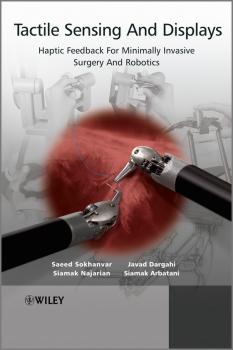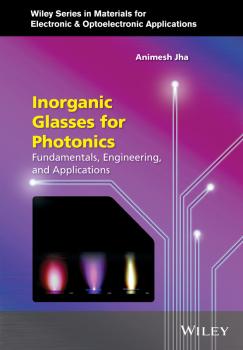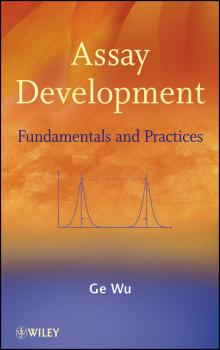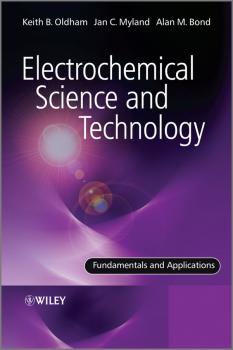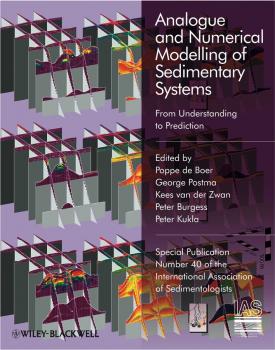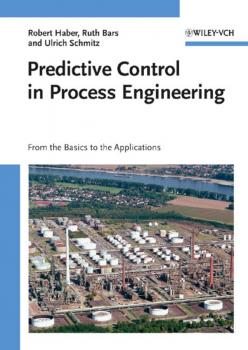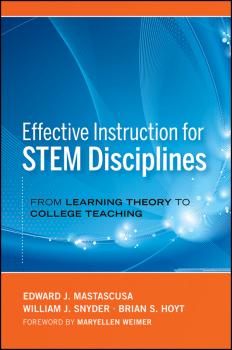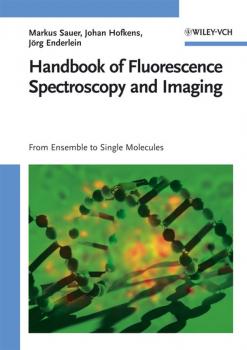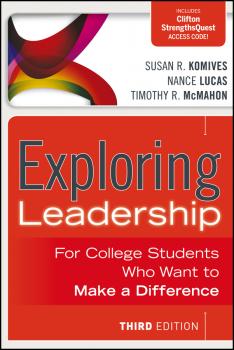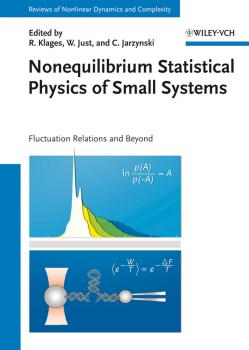Прочая образовательная литература
Различные книги в жанре Прочая образовательная литератураTactile Sensing and Displays. Haptic Feedback For Minimally Invasive Surgery And Robotics
Comprehensively covers the key technologies for the development of tactile perception in minimally invasive surgery Covering the timely topic of tactile sensing and display in minimally invasive and robotic surgery, this book comprehensively explores new techniques which could dramatically reduce the need for invasive procedures. The tools currently used in minimally invasive surgery (MIS) lack any sort of tactile sensing, significantly reducing the performance of these types of procedures. This book systematically explains the various technologies which the most prominent researchers have proposed to overcome the problem. Furthermore, the authors put forward their own findings, which have been published in recent patents and patent applications. These solutions offer original and creative means of surmounting the current drawbacks of MIS and robotic surgery. Key features:– Comprehensively covers topics of this ground-breaking technology including tactile sensing, force sensing, tactile display, PVDF fundamentals Describes the mechanisms, methods and sensors that measure and display kinaesthetic and tactile data between a surgical tool and tissue Written by authors at the cutting-edge of research into the area of tactile perception in minimally invasive surgery Provides key topic for academic researchers, graduate students as well as professionals working in the area
Inorganic Glasses for Photonics. Fundamentals, Engineering, and Applications
Advanced textbook on inorganic glasses suitable for both undergraduates and researchers. Engaging style to facilitate understanding Suitable for senior undergraduates, postgraduates and researchers entering material science, engineering, physics, chemistry, optics and photonics fields Discusses new techniques in optics and photonics including updates on diagnostic techniques Comprehensive and logically structured
Assay Development. Fundamentals and Practices
Essential principles and practice of assay development The first comprehensive, integrated treatment of the subject, Assay Development: Fundamentals and Practices covers the essentials and techniques involved in carrying out an assay project in either a biotechnology/drug discovery setting or a platform setting. Rather than attempting comprehensive coverage of all assay development technologies, the book introduces the most widely used assay development technologies and illustrates the art of assay development through a few commonly encountered biological targets in assay development (e.g., proteases, kinases, ion channels, and G protein-coupled receptors). Just enough biological background for these biological targets is provided so that the reader can follow the logics of assay development. Chapters discuss: The basics of assay development, including foundational concepts and applications Commonly used instrumental methods for both biochemical assays and cell-based assays Assay strategies for protein binding and enzymatic activity Cell-based assays High-throughput screening An in-depth study of the now popular Caliper's off-chip kinase assay provides an instructive, real-world example of the assay development process.
Electrochemical Science and Technology. Fundamentals and Applications
Electrochemistry is a discipline of wide scientific and technological interest. Scientifically, it explores the electrical properties of materials and especially the interfaces between different kinds of matter. Technologically, electrochemistry touches our lives in many ways that few fully appreciate; for example, materials as diverse as aluminum, nylon, and bleach are manufactured electrochemically, while the batteries that power all manner of appliances, vehicles, and devices are the products of electrochemical research. Other realms in which electrochemical science plays a crucial role include corrosion, the disinfection of water, neurophysiology, sensors, energy storage, semiconductors, the physics of thunderstorms, biomedical analysis, and so on. This book treats electrochemistry as a science in its own right, albeit resting firmly on foundations provided by chemistry, physics, and mathematics. Early chapters discuss the electrical and chemical properties of materials from which electrochemical cells are constructed. The behavior of such cells is addressed in later chapters, with emphasis on the electrodes and the reactions that occur on their surfaces. The role of transport to and from electrodes is a topic that commands attention, because it crucially determines cell efficiency. Final chapters deal with voltammetry, the methodology used to investigate electrode behavior. Interspersed among the more fundamental chapters are chapters devoted to applications of electrochemistry: electrosynthesis, power sources, “green electrochemistry”, and corrosion. Electrochemical Science and Technology is addressed to all who have a need to come to grips with the fundamentals of electrochemistry and to learn about some of its applications. It will constitute a text for a senior undergraduate or graduate course in electrochemistry. It also serves as a source of material of interest to scientists and technologists in various fields throughout academia, industry, and government – chemists, physicists, engineers, environmentalists, materials scientists, biologists, and those in related endeavors. This book: Provides a background to electrochemistry, as well as treating the topic itself. Is accessible to all with a foundation in physical science, not solely to chemists. Is addressed both to students and those later in their careers. Features web links (through www.wiley.com/go/EST) to extensive material that is of a more tangential, specialized, or mathematical nature. Includes questions as footnotes to support the reader’s evolving comprehension of the material, with fully worked answers provided on the web. Provides web access to Excel® spreadsheets which allow the reader to model electrochemical events. Has a copious Appendix of relevant data.
Analogue and Numerical Modelling of Sedimentary Systems. From Understanding to Prediction (Special Publication 40 of the IAS)
Understanding basin-fill evolution and the origin of stratal architectures has traditionally been based on studies of outcrops, well and seismic data, studies of and inferences on qualitative geological processes, and to a lesser extent based on quantitative observations of modern and ancient sedimentary environments. Insight gained on the basis of these studies can increasingly be tested and extended through the application of numerical and analogue forward models. Present-day stratigraphic forward modelling follows two principle lines: 1) the deterministic process-based approach, ideally with resolution of the fundamental equations of fluid and sediment motion at all scales, and 2) the stochastic approach. The process-based approach leads to improved understanding of the dynamics (physics) of the system, increasing our predictive power of how systems evolve under various forcing conditions unless the system is highly non-linear and hence difficult or perhaps even impossible to predict. The stochastic approach is more direct, relatively simple, and useful for study of more complicated or less-well understood systems. Process-based models, more than stochastic ones, are directly limited by the diversity of temporal and spatial scales and the very incomplete knowledge of how processes operate and interact on the various scales. The papers included in this book demonstrate how cross-fertilization between traditional field studies and analogue and numerical forward modelling expands our understanding of Earth-surface systems.
Predictive Control in Process Engineering. From the Basics to the Applications
Describing the principles and applications of single input, single output and multivariable predictive control in a simple and lively manner, this practical book discusses topics such as the handling of on-off control, nonlinearities and numerical problems. It gives guidelines and methods for reducing the computational demand for real-time applications. With its many examples and several case studies (incl. injection molding machine and waste water treatment) and industrial applications (stripping column, distillation column, furnace) this is invaluable reading for students and engineers who would wish to understand and apply predictive control in a wide variety of process engineering application areas.
Effective Instruction for STEM Disciplines. From Learning Theory to College Teaching
Praise for Effective Instruction for STEM Disciplines «The world of today's learners is a multimode, information-intensive universe of interactive bursts and virtual exchanges, yet our teaching methods retain the outdated characteristics of last generation's study-and-drill approach. New pedagogical methods, detailed and justified in this groundbreaking work, are essential to prepare students to confront the concerns of the future. The book challenges our traditional assumptions and informs the science, technology, engineering, and mathematics (STEM) community of the latest research on how the brain learns and retains information, how enhanced student engagement with subject material and its context is essential to deep learning, and how to use this knowledge to structure STEM education approaches that work.»—David V. Kerns, Jr., Franklin and Mary Olin Distinguished Professor of Electrical and Computer Engineering, and founding provost, Olin College «Every STEM faculty member should have this book. It provides a handy introduction to the 'why and how' of engaging students in the learning process.»—David Voltmer, professor emeritus, Rose-Hulman Institute of Technology, and American Society for Engineering Education Fellow «The poor quality of math and science education and the shortage of well-qualified graduates are acknowledged almost daily in the U.S. press. Here the authors provide much-needed insights for educators seeking to improve the quality of STEM education as well as to better prepare students to solve the problems they will confront in our increasingly technology-driven world.»—Keith Buffinton, interim dean of engineering, Bucknell University
Handbook of Fluorescence Spectroscopy and Imaging. From Ensemble to Single Molecules
Providing much-needed information on fluorescence spectroscopy and microscopy, this ready reference covers detection techniques, data registration, and the use of spectroscopic tools, as well as new techniques for improving the resolution of optical microscopy below the resolution gap. Starting with the basic principles, the book goes on to treat fluorophores and labeling, single-molecule fluorescence spectroscopy and enzymatics, as well as excited state energy transfer, and super-resolution fluorescence imaging. Examples show how each technique can help in obtaining detailed and refined information from individual molecular systems.
Exploring Leadership. For College Students Who Want to Make a Difference
Note from the publisher: Each copy of Exploring Leadership, Third Edition comes with an access code so students can take the Clifton StrengthsFinder, a 30-minute online assessment which has helped more than eight million people around the world discover their talents. After they take the self-assessment, they'll receive a customized report that lists their top five talent themes, along with action items for development and suggestions about how they can use their talents to achieve academic, career, and personal success. In the book, the authors discuss the importance of understanding oneself, and how using the StrengthsFinder assessment will help one do so. (E-book customers must prove they have purchased the book to obtain their StrengthsFinder access code from Wiley Customer Service. If you rent or purchase a used book, the access code may have been redeemed previously and will no longer work.) This third edition is a thoroughly revised and updated version of the bestselling text for undergraduate leadership courses. This book is designed for college students to help them understand that they are capable of being effective leaders and guide them in developing their leadership potential. The Relational Leadership Model (RLM) continues as the major focus in this edition, and the book includes stronger connections between the RLM dimensions and related concepts, as well as visual applications of the model. The third edition includes new student vignettes that demonstrate how the major concepts and theories can be applied. It also contains new material on social justice, conflict management, positive psychology, appreciative inquiry, emotional intelligence, and new self-assessment and reflection questionnaires. For those focused on the practice of leadership development, the third edition is part of a complete set that includes a Student Workbook, a Facilitation and Activity Guide for educators, and free downloadable instructional PowerPoint® slides. The Workbook is a student-focused companion to the book and the Facilitation and Activity Guide is designed for use by program leaders and educators.
Nonequilibrium Statistical Physics of Small Systems. Fluctuation Relations and Beyond
This book offers a comprehensive picture of nonequilibrium phenomena in nanoscale systems. Written by internationally recognized experts in the field, this book strikes a balance between theory and experiment, and includes in-depth introductions to nonequilibrium fluctuation relations, nonlinear dynamics and transport, single molecule experiments, and molecular diffusion in nanopores. The authors explore the application of these concepts to nano- and biosystems by cross-linking key methods and ideas from nonequilibrium statistical physics, thermodynamics, stochastic theory, and dynamical systems. By providing an up-to-date survey of small systems physics, the text serves as both a valuable reference for experienced researchers and as an ideal starting point for graduate-level students entering this newly emerging research field.
